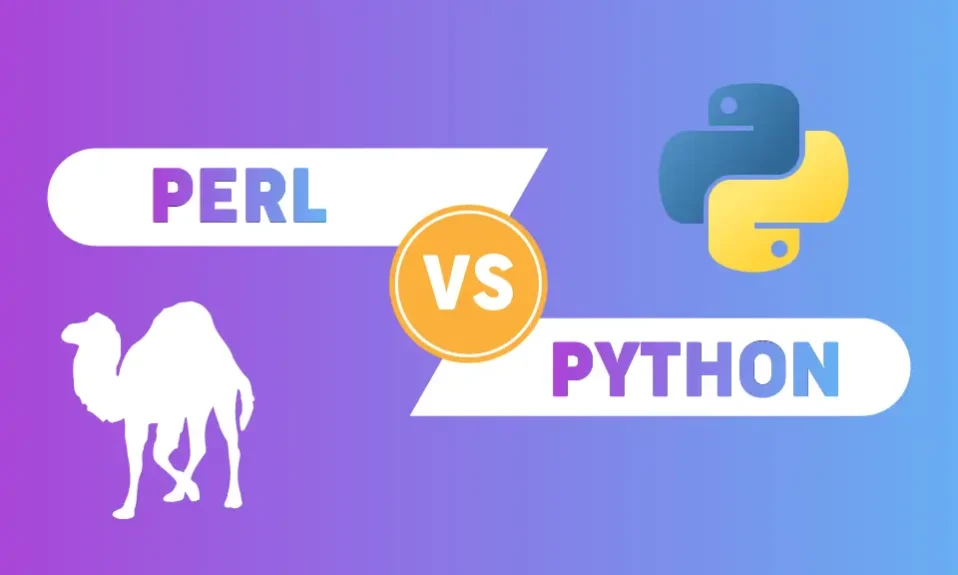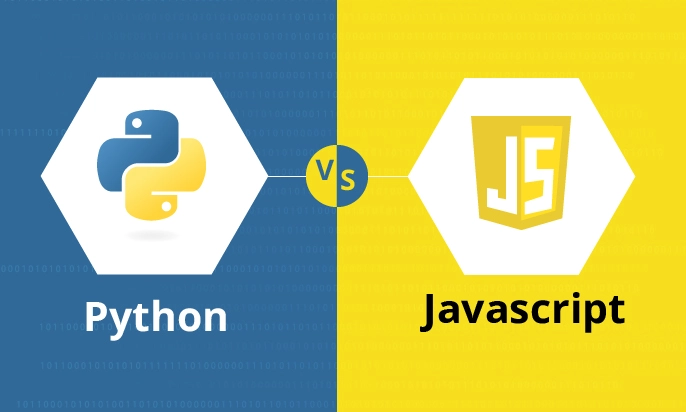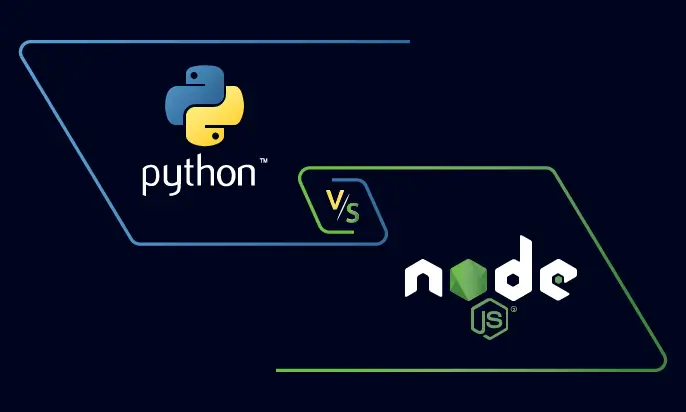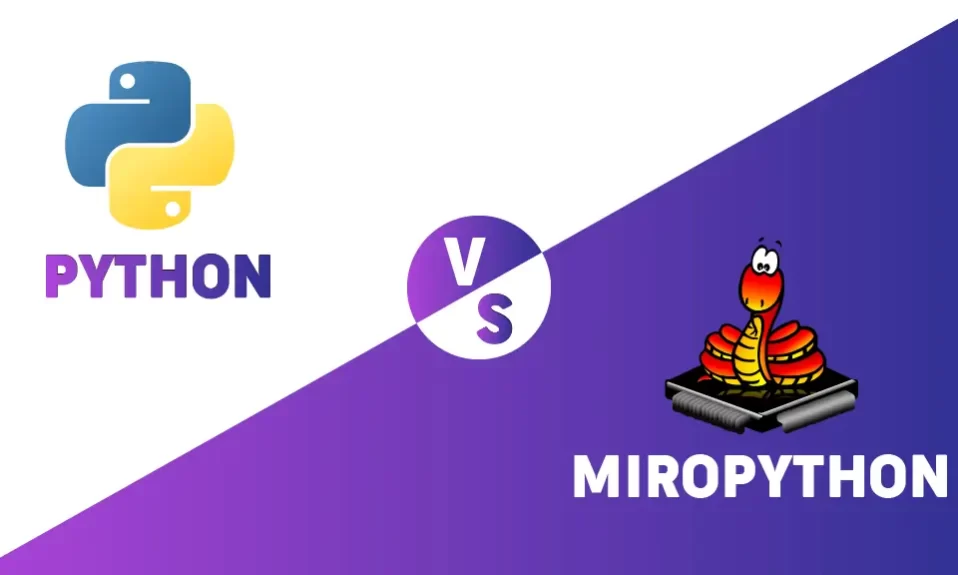When it comes to choosing a programming language, developers often find themselves torn between numerous options. In this article, we will explore the differences between two popular programming languages: Perl and Python. Both Perl and Python have their unique features and use cases, making it necessary to understand their strengths and weaknesses before making a decision.
Perl, originally developed in 1987, is known for its powerful text processing capabilities and flexibility. On the other hand, Python, created in 1991, finds its strength in its simplicity, readability, and versatility. By comparing these languages, developers can gain insights into which language is better suited for their specific requirements.
Key Takeaways:
- Perl and Python are both widely used programming languages with distinct characteristics.
- Perl shines in text processing and scripting tasks, while Python is known for its readability and simplicity.
- The choice between Perl and Python depends on the specific requirements of a project.
- Developers should consider factors such as performance, community support, and available libraries when selecting a programming language.
- By understanding the differences between Perl and Python, developers can make informed decisions for their projects.
Syntax and Readability
When it comes to programming languages, the syntax and readability play a crucial role in developers’ experience and code maintenance. Both Perl and Python have their distinct coding styles, syntax rules, and conventions that impact their overall readability and ease of use.
Coding Styles
Perl is known for its flexibility and concise syntax, allowing developers to write code with fewer lines. However, this flexibility can sometimes lead to code that is harder to read, especially for beginners. On the other hand, Python follows a strict and explicit coding style, emphasizing readability and enforcing consistent indentation.
Example:
Perl:
“` print “Hello, World!”; “`Python:
“` print(“Hello, World!”) “`
Syntax Rules and Conventions
Perl and Python also differ in their syntax rules and conventions. Perl uses a sigil ($) to represent scalar variables, making it easier for developers to know the variable’s type. In contrast, Python uses dynamic typing, allowing developers to create variables without explicitly specifying their type. This dynamic typing can make Python code more concise, but it can also lead to potential errors.
Furthermore, Perl follows a “TMTOWTDI” (There’s More Than One Way To Do It) philosophy, which promotes flexibility but can make code harder to understand and maintain. Python, on the other hand, follows a “one way to do it” philosophy, favoring code readability and reducing ambiguity.
Beginner-Friendliness and Readability
When it comes to beginner-friendliness and readability, Python is often considered the winner. Its clean and straightforward syntax, combined with strict indentation rules, makes it easier for beginners to grasp and write code. Python’s self-explanatory code also enhances readability, making it easier to understand and maintain even for large projects.
Perl, on the other hand, with its flexible syntax and multiple ways of doing things, can be overwhelming for beginners. The use of symbols and concise syntax may require a steep learning curve and demand solid understanding of Perl’s idioms and conventions to write readable code.
Overall, Python’s readable and beginner-friendly syntax, combined with its strict coding style, makes it the preferred choice for developers looking for clean and maintainable code. However, Perl’s flexibility and concise syntax can be advantageous for experienced developers who appreciate its expressive power and versatility.
Performance and Speed
When it comes to programming languages, performance and speed are essential factors to consider. Both Perl and Python have their own strengths and trade-offs in this regard.
Execution Time:
Perl is known for its efficient execution time, making it an excellent choice for tasks that require quick processing. It performs exceptionally well in scenarios such as text parsing, system administration, and network programming. Python, on the other hand, is slightly slower in terms of execution time due to its dynamic nature and extensive libraries.
Memory Usage:
In terms of memory usage, Perl tends to consume less memory compared to Python. This makes it a preferred option for applications that require minimal memory footprint. Python, however, utilizes more memory due to its rich set of libraries and features.
Efficiency:
Perl’s concise syntax and powerful regular expression support contribute to its efficiency when it comes to handling complex pattern matching and data manipulation tasks. Python, with its clean and readable code, offers better efficiency when it comes to code maintenance and collaboration.
In summary, if performance and speed are your top priorities, Perl might be the better choice. Its fast execution time and low memory usage make it ideal for time-sensitive applications. However, if code readability and collaboration are more important, Python’s trade-offs in performance are often outweighed by its ease of use and extensive library support.
Core Features and Libraries
When it comes to core features and libraries, both Perl and Python offer a wide range of functionalities to help developers build robust and efficient applications. Let’s take a closer look at what each language brings to the table.
Perl Core Features
Perl is known for its powerful text processing capabilities, making it an excellent choice for tasks such as parsing and manipulating large datasets. It provides built-in regular expressions and string manipulation functions, allowing developers to easily handle complex text operations. Additionally, Perl’s extensive standard library offers modules for various tasks, including network programming, file handling, and system administration.
Related: How to Check Python Version?
Python Core Features
Python, on the other hand, emphasizes readability and simplicity, making it an ideal language for beginners and experienced developers alike. Its clean and intuitive syntax promotes code readability and ease of maintenance. Python’s standard library is also highly comprehensive, offering modules for web development, scientific computing, data analysis, machine learning, and more.
Third-Party Libraries and Frameworks
Both Perl and Python have vibrant communities that actively develop and maintain third-party libraries and frameworks, further expanding the capabilities of these programming languages.
Perl boasts a rich ecosystem of CPAN (Comprehensive Perl Archive Network) modules, which cover a wide range of domains such as web development, database integration, graphics, and more. The CPAN repository includes over 37,000 modules, offering developers ample choices for extending Perl’s functionality.
Python, too, has a thriving package ecosystem, with the Python Package Index (PyPI) hosting over 300,000 packages. From web frameworks like Django and Flask to data analysis libraries like NumPy and pandas, Python’s ecosystem caters to diverse development needs, allowing developers to quickly build and deploy efficient solutions.
Below is a comparison table highlighting some of the notable core features and libraries available in Perl and Python:
| Language | Core Features | Libraries |
|---|---|---|
| Perl | Text processing, regular expressions, file handling | CPAN, Catalyst, Dancer, Mojolicious |
| Python | Clean syntax, readability, object-oriented programming | Django, Flask, NumPy, pandas |
The table above provides a snapshot of the core features and popular libraries in Perl and Python. However, it is important to note that both languages have a vast ecosystem of libraries and frameworks, catering to a wide array of development requirements.
Related: Python vs Node.js
Community and Support
When choosing a programming language, it’s important to consider the communities and support systems surrounding it. In the case of Perl and Python, both languages have vibrant and active communities that provide valuable resources and assistance to developers.
The Perl community, known for its strong sense of camaraderie and dedication, has been around for decades. It consists of experienced developers, enthusiasts, and experts who actively contribute to online forums, mailing lists, and social media groups. The Perl community is renowned for its willingness to help newcomers, answering questions, providing guidance, and sharing best practices.
Python, on the other hand, has one of the largest and most diverse communities in the programming world. With a massive user base, developers of all skill levels can find support and engage with others who share their interests. The Python community is known for its inclusivity and welcoming nature, creating a supportive environment for developers to thrive.
When it comes to online resources and documentation, both Perl and Python have extensive libraries and documentation available. The Perl community maintains a comprehensive collection of documentation, covering every aspect of the language and its ecosystem. Python, with its vast popularity, offers an abundance of documentation, tutorials, and guides that cater to a wide range of development needs.
“The Perl community’s support and extensive documentation have been invaluable in my journey as a Perl developer. Whenever I have encountered challenges, I’ve received prompt and helpful assistance from the community members.” – Jane Roberts, Perl Developer
In summary, both the Perl and Python communities offer strong support systems and a rich pool of resources for developers. Whether you choose Perl or Python, you can rely on their communities to provide assistance, share knowledge, and foster a collaborative environment.
Web Development Capabilities
When it comes to web development, both Perl and Python have their unique capabilities and strengths. Let’s explore what each language has to offer in this domain.
Perl
Perl has been a popular choice for web development for many years, known for its strong text-processing capabilities. It offers a range of frameworks and libraries that make building web applications faster and easier. One such framework is Dancer, which provides a lightweight and flexible option for creating web applications in Perl.
Perl’s extensive CPAN (Comprehensive Perl Archive Network) repository also offers a plethora of modules for web development. These modules cover various aspects such as handling CGI, database integration, and templating, providing developers with a wide range of tools to build robust web applications.
Python
Python, on the other hand, has gained significant popularity in the web development community due to its simplicity and readability. It offers several powerful frameworks for web development, including Django and Flask. Django, a full-featured web framework, provides a complete solution for building complex web applications rapidly. Flask, a micro-framework, allows developers to create small, lightweight web applications quickly.
Python’s rich ecosystem of libraries and tools further enhances its web development capabilities. With libraries like BeautifulSoup and Requests, developers can easily parse and manipulate HTML documents, make HTTP requests, and interact with web APIs. These libraries contribute to Python’s reputation as a versatile language for web development.
Related: Python VS Miropython
Choosing the Right Tool
When deciding between Perl and Python for web development, it’s essential to consider your specific project requirements. Perl’s strengths in text processing, combined with its extensive CPAN repository, make it a compelling choice for applications that heavily rely on text manipulation. On the other hand, Python’s simplicity, readability, and vast array of web frameworks and libraries make it an excellent option for a wide range of web development projects.
“Perl’s strengths lie in its text-processing capabilities, making it a great fit for applications involving heavy text manipulation. Python, with its simplicity and rich library ecosystem, excels in building diverse web applications.”
In conclusion, both Perl and Python offer robust web development capabilities, but each has its own unique strengths. Understanding the specific needs of your project will help you make an informed decision on which language is best suited for your web development endeavors.
Scripting and Automation
In today’s fast-paced technological landscape, scripting and automation have become crucial aspects of software development. Both Perl and Python offer powerful capabilities for automating repetitive tasks, processing text files, and interacting with various operating system features. Let’s explore how these two programming languages excel in scripting and automation tasks.
Perl for Scripting and Automation
Perl is widely known for its scripting prowess. Its concise syntax and extensive library support make it an excellent choice for automating tasks that involve text processing, system administration, and data manipulation. With Perl, developers can quickly create efficient scripts to perform a wide range of automation tasks.
“Perl is the Swiss Army chainsaw of scripting languages: powerful and adaptable. Scripting in Perl is quick and efficient, thanks to its built-in regular expression support and text-processing capabilities. With Perl’s one-liners, manipulating text data and automating tasks becomes a breeze.”
By harnessing the power of regular expressions, Perl allows developers to perform complex search and replace operations, text parsing, and data extraction from files and databases. Its ability to seamlessly integrate with system commands and processes makes Perl a handy tool for system administration tasks.
Python for Scripting and Automation
Python has gained immense popularity in the scripting and automation domain due to its clean syntax and versatility. With its user-friendly design, Python makes it easy for developers to write and maintain scripts for automation purposes.
“Python shines in simplicity and readability, making it an ideal choice for scripting and automation. Its extensive standard library and third-party packages provide developers with a wide range of tools and functionalities for automating tasks.”
Python’s vast library ecosystem offers numerous modules and packages tailored for automation, making it straightforward to interact with files, databases, and network resources. Its intuitive syntax allows developers to write scripts that are easy to understand and modify, even for those new to programming.
Comparing Perl and Python for Scripting and Automation
Both Perl and Python have their strengths when it comes to scripting and automation, catering to different use cases and preferences. To make an informed decision, let’s compare their key features in a table:
| Feature | Perl | Python |
|---|---|---|
| Syntax | Concise and flexible | Clean and readable |
| Text Processing | Strong support for regular expressions | Built-in string manipulation capabilities |
| System Integration | Tight integration with system commands and utilities | Easy to execute system commands and interact with processes |
| Library Support | Rich collection of modules for various automation tasks | Extensive standard library and third-party packages |
| Learning Curve | Steeper learning curve due to unique syntax and concepts | Gentler learning curve with a more beginner-friendly syntax |
As evident from the table, Perl and Python offer different strengths and approaches to scripting and automation. Choosing between the two depends on the specific use case, the developer’s preference, and the existing infrastructure.
Now that we have explored Perl and Python’s scripting and automation capabilities, it’s time to move on to another important aspect of these programming languages: database integration.
Database Integration
When it comes to database integration, both Perl and Python offer a range of options for seamless connectivity and interaction with various database systems. Developers can leverage these capabilities to efficiently store, retrieve, and manipulate data in their applications.
Perl, with its long-standing history in web development, provides several database connectors, such as DBI (Database Interface) and DBD::MySQL, allowing developers to easily interact with popular database systems like MySQL, PostgreSQL, and Oracle. Perl’s extensive support for different database systems makes it a versatile choice for projects requiring integration with diverse data sources.
On the other hand, Python, known for its simplicity and readability, also offers robust database integration capabilities. The language provides standard libraries like sqlite3 and psycopg2, enabling developers to work with SQLite and PostgreSQL databases, respectively. Additionally, Python supports other database systems like MySQL, Oracle, and MongoDB through third-party libraries such as MySQL Connector, cx_Oracle, and PyMongo.
When considering database integration in Perl vs Python, it’s important to note that both languages have powerful ORM (Object-Relational Mapping) libraries available. These libraries simplify the interaction between the application and the database by mapping database tables to objects and providing an intuitive interface for CRUD (Create, Read, Update, Delete) operations. Perl offers ORMs like DBIx::Class and Rose::DB, while Python provides popular choices like Django ORM and SQLAlchemy.
Database Integration Capabilities Comparison
To give you a comprehensive overview of the database integration capabilities of Perl and Python, let’s compare their supported database systems, example code snippets for basic operations, and notable features:
| Perl | Python | |
|---|---|---|
| Supported Database Systems |
|
|
| Example Code Snippet |
|
|
| Notable Features |
|
|
As you can see, both Perl and Python provide comprehensive support for database integration, including major database systems like MySQL, PostgreSQL, and Oracle. However, Python’s wider range of supported databases, including NoSQL options like MongoDB, may be advantageous for applications with specific database requirements.
Furthermore, Perl boasts a strong and mature community, making it an excellent choice for developers seeking extensive documentation and community support for their database integration projects. Meanwhile, Python’s vast ecosystem of third-party libraries ensures additional flexibility and diverse options for database interactions.
In conclusion, when choosing between Perl and Python for database integration, developers should consider the specific database system requirements and the availability of ORM libraries and community support. Selecting the right language for database integration is crucial for building robust and efficient applications.
Conclusion
After comparing Perl and Python as programming languages, it is clear that both have their unique strengths and use cases. Choosing the right language depends on specific development needs and preferences.
Python, with its clean and readable syntax, extensive standard library, and strong emphasis on simplicity, is an excellent choice for beginners and those interested in scientific and data analysis, web development, and machine learning. Its vast community support and rich ecosystem of libraries make it a popular choice for developers.
On the other hand, Perl offers powerful text-processing capabilities, making it particularly suitable for system administration, network programming, and complex data manipulation tasks. Its flexibility, regular expression support, and extensive collection of CPAN modules make it a go-to language for seasoned developers and those dealing with legacy systems.
In conclusion, there is no clear winner in the Perl vs Python debate. Both languages have their merits and are widely adopted in various domains. It is important to analyze the specific requirements of a project and consider factors such as readability, performance, available libraries, and community support before making a decision. Ultimately, the choice between Perl and Python should be based on the unique needs and preferences of the development team and the project at hand.
FAQ
What are the key differences between Perl and Python?
Perl and Python are both programming languages, but they have distinct characteristics. Perl is known for its powerful text-processing capabilities and flexibility, while Python is praised for its simplicity and readability. Perl is often used for system administration, network programming, and web development, while Python is popular in data analysis, machine learning, and web development.
Which language, Perl or Python, is more beginner-friendly and readable?
Python is often considered more beginner-friendly and readable compared to Perl. Python’s syntax and simple, expressive code make it easier to learn and understand, especially for beginners. In contrast, Perl has a more complex syntax and may be less approachable for newcomers. However, experienced Perl programmers may find its flexible and concise coding style appealing.
How do the performance and speed of Perl and Python compare?
In general, Perl is faster than Python in execution time, but Python excels in memory usage and efficiency. Perl’s speed advantage comes from its low-level functionality and efficient string handling. However, Python’s focus on readability and robustness often leads to optimized memory consumption and efficient execution. The choice between the two languages depends on the specific performance requirements of your project.
What core features and libraries are available in Perl and Python?
Perl and Python offer a wide range of core features and libraries. Perl has extensive support for regular expressions, text manipulation, and system administration tasks. Python, on the other hand, is known for its rich standard library, offering modules for diverse purposes such as web development, scientific computing, and artificial intelligence. Both languages also have large ecosystems of third-party libraries and frameworks.
How do the Perl and Python communities and support systems compare?
Both Perl and Python have active and supportive communities. Perl has a long-standing community with numerous dedicated forums and mailing lists. Python’s community is one of the largest in the programming world, offering vast resources, online forums, and active discussion groups. Regardless of the language, developers can find ample support and resources to assist them in their programming endeavors.
Which language, Perl or Python, is better suited for web development?
Python is often considered more suitable for web development due to its extensive web frameworks like Django and Flask. These frameworks provide developers with robust tools for building scalable web applications quickly. Although Perl has CGI and mod_perl for web development, Python’s frameworks are more widely used and have stronger community support.
Are Perl and Python good choices for scripting and automation tasks?
Both Perl and Python excel in scripting and automation tasks. Perl’s strong text-processing capabilities and extensive support for system operations make it a popular choice for scripting tasks. Python also offers powerful scripting abilities and has the advantage of a large number of libraries and modules tailored for automation. Developers can choose the language that aligns better with their preferences and the specific requirements of their projects.
What are the database integration capabilities of Perl and Python?
Both Perl and Python provide excellent support for database integration. Perl boasts a wide selection of database connectors and is often preferred for its excellent database interaction libraries like DBI (Database Interface) and DBIx::Class. Python offers robust Object-Relational Mapping (ORM) libraries such as SQLAlchemy, making it easier to work with different database systems. The choice between the two languages depends on the specific needs of your project and the databases you plan to use.
What is the conclusion on choosing between Perl and Python?
The choice between Perl and Python depends on the specific requirements of your project and your personal preferences. If you prioritize simplicity, readability, and a large community, Python may be the better choice. On the other hand, if you value flexibility, powerful text-processing capabilities, and a vast library of existing code snippets, Perl could be the right choice for you. Both languages have their strengths and weaknesses, so it is essential to evaluate your needs and goals carefully before making a decision.





